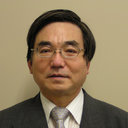A new human pleomorphic hepatocellular carcinoma cell line, KYN-2.
Ključne besede
Povzetek
A new human hepatocellular carcinoma (HCC) cell line, KYN-2, has been established from a surgical specimen obtained from a 52-year-old Japanese male HCC patient. The originally resected HCC was classified as pleomorphic HCC corresponding to Edmondson-Steiner's grade III with a thick trabecular to solid arrangement. The cell line has been maintained for 17 months through 35 passages. Morphologically, the KYN-2 cells have retained the characteristics of the original HCC, being pleomorphic and composed of various types such as cells with relatively small, polygonal, eosinophilic cytoplasm and oval-shaped nuclei with a marked tendency to pile up, flat cells with abundant clear cytoplasm and oval-shaped nuclei, and many multinucleated giant cells, proliferating in a pavement-like cell arrangement. Some junctional complexes and a number of microvilli are evident between the cells by electron microscopy. Functionally, these cells were found to secrete albumin, alpha 1-acid glycoprotein, alpha 1-antitrypsin, ceruloplasmin, transferrin, complement C, fibrinogen, fibronectin, prothrombin, retinol-binding protein (serum type), alpha-fetoprotein (AFP), carcinoembryonic antigen (CEA), ferritin and beta 2-microglobulin in chemically defined medium (CDM). The secretion of AFP and CEA is apparently dependent upon culture medium and passage. The doubling time of cells growing in serum-containing medium at the 14th passage was 84 h, and those of cells in serum-containing medium, HB101 (serum-free medium) and CDM at late passage were 28, 68, and 42 h, respectively. Chromosome analysis revealed that the chromosome number ranged from 56 to 69 without a mode, and the presence of marker chromosomes. HB virus DNA sequence was not detected by hybridization analysis. The tumorigenicity of KYN-2 cells was identified by development of tumors in nude mice after subcutaneous injection of the cells; the tumors showed an appearance basically similar to that of the original HCC. Thus, these findings suggest that the KYN-2 cell line is available as a new human HCC cell line and should be useful for various studies on HCC.


